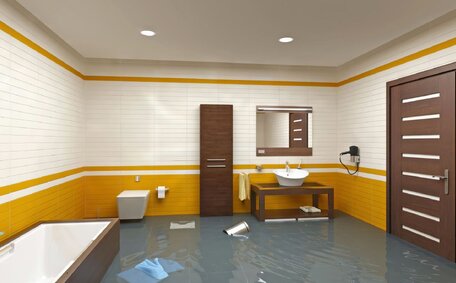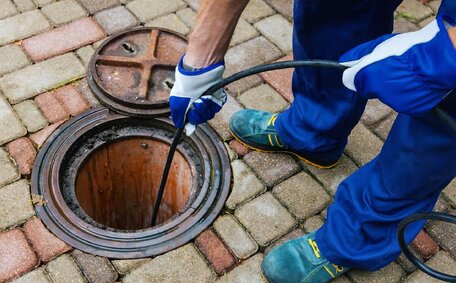Introduction to Preparing Your Hot Water System for Winter
With winter approaching, Cherrybrook homeowners must prepare their hot water systems for the drop in temperature. An unmaintained water heater can sustain damage or consume excessive energy under winter strains.
Undertake essential maintenance steps such as flushing sediment, inspecting sacrificial anodes, insulating external parts, and releasing pressure to extend your water heater’s lifespan and efficiency, particularly as temperatures drop. For your hot water tank, we advise descaling as a protective measure. These proactive steps in winterizing your water heater enhance efficiency and safeguard against common cold-related issues such as leaks and corrosion.
In this article, we’ll explore how to prepare your hot water unit for winter in detail, drawing on real-world cases from the Cherrybrook area. Preparing your water heater for winter before the cold intensifies can reduce utility bills and prolong your system’s life.
For assistance in winterizing your water system, consult your local plumber to ensure robust protection of your home’s plumbing.
Draining the Tank to Remove Sediment Buildup
It’s important to acknowledge that over time, sediment and mineral deposits can build up at the bottom of your water heating system’s tank. Before flushing out build-up, ensure the power to the unit and the cold water supply line are both switched off. Let the water inside cool thoroughly beforehand to avoid the risk of scalding from high temperatures.
Once cooled, attach a garden hose to the tank’s drain valve, making sure it’s securely fastened. Lift the lever to expel water and dislodge sediment.
Aim the hose’s opposite end into a bucket or outdoor area.
Allowing sediment to build up reduces efficiency and accelerates corrosion within your tank water system. Regular flushing caters to your heater needs, helping to optimise energy usage and prolong the unit’s lifespan. Prioritize safety by allowing the water to cool sufficiently before commencing this maintenance step.
Checking and Replacing the Sacrificial Anode
Sacrificial anodes play a vital role inside tank systems, ensuring their longevity. Made of reactive metals like aluminium and magnesium, rather than corroding your tank, they actively corrode to prevent steel tanks from rusting prematurely. Usually within five years, anodes erode, protecting your tank’s integrity.
To inspect your water tank, first shut off the power and water supply like when draining sediment. After cooling, unscrew the anode at the top of the tank. Gauge its diameter - if it measures less than about 6mm, it’s recommended to replace your sacrificial anode prior to the winter season. In storage hot water systems, reactive metals wear out more quickly in cold conditions.
Replacing the anode rod with one of the same size is often necessitated by the arrival of winter conditions. Switch the off power and use duct tape or a similar sealing material to prevent leaking. After replacement, restore water and power, then assess your anode’s condition every one to two years. Implementing this small measure every six months or so prevents significant tank damage over time.
Insulating the Water Heater Tank and Pipes
Effectively insulating the tank is crucial to maintaining optimal heat retention during the winterizing process. Special insulation blankets wrapped around tanks ensure your unit can conserve energy by reducing heat loss from the outer walls during colder months. This measure boosts efficiency, ensuring consistent water temperatures despite the cold.
When installing blankets, make sure to avoid covering top flues or other openings that could pose fire/health hazards if blocked. Insulate the tank itself by wrapping it securely, following the product’s instructions. The blanket acts as a thermal barrier, trapping heat inside.
Taking measures to insulate the hot water pipes responds to your water heater needs, preventing burst pipes and ensuring proper winterization. Insulation tubes fitted onto exposed pipes can protect your home’s water heater from unforeseen cold-weather piping problems. Maintaining ideal temperatures aids in reducing strain on your plumbing electrical components, particularly the system’s heating element.
This step is critical as temperatures fall, protecting your hot water pipes from freezing and preserving heat, thus minimizing heat loss during cold weather.
Insulating the tank, along with flushing and anode replacement, boosts heater efficiency and extends its service life through winter. Our plumbers can expertly get your water heater ready, offering assistance with installing materials or servicing heaters before the cold sets in.
Releasing Pressure in the Tank
Allowing excessive pressure to swell inside the water heater tank can pose risks, rendering it crucial to keep the unit in tiptop shape to avoid property hazards. Tanks are equipped with a temperature pressure relief (TPR valve), working as a critical safeguard to vent steam should internal conditions surpass safe thresholds. Calcium deposits may compromise safety mechanisms and hinder valve functionality.
It is wise to periodically check your hot water heater by activating the pressure relief lever. If functioning correctly, a hissing sound and water discharge will signal that this essential part your water system is operating as it should, ensuring there’s no hot water disruption. If no sound occurs upon lifting the lever, this may signal an internal blockage, necessitating valve replacement.
Don’t hesitate to contact us; your plumber can promptly evaluate and substitute defective relief valves on your water system. Doing so gives peace of mind by ensuring steam and pressure inside the tank can vent before hazardous thresholds are reached, preventing catastrophic tank failures.
Descaling Tankless Water Heaters
We recommend professional descaling for tankless water heaters before winter to prevent mineral buildup and maintain efficiency. Hence, we recommend initiating a descaling routine annually before the cold season arrives or if output temperatures diminish.
Start by gathering distilled vinegar or a commercial descaling solution, bucket, hoses, and pump if your model doesn’t have a built-in descaling function. Turn off water and power supplies before you begin the descaling process. Disconnect inlet pipes and attach a hose from the descaling solution to the inlet port, and another hose from the outlet to a bucket.
Enable any manual descaling mode on digital controllers if present. This process dissolves scale to maintain free flow of hot water.
Then use a pump to circulate the vinegar through the internal components for 30-60 minutes before flushing clean.
Addressing your water heater’s descaling needs prior to winter enhances efficiency by averting restrictive mineral accumulations. It may need repeating every 1-2 years depending on water hardness. If unsure, our technicians can perform thorough descaling along with other maintenance to keep tankless systems running optimally year-round.
Adjusting the Temperature Setting
The winter chill might prompt those with solar hot water systems to increase the thermostat for a warmer shower. However, specialists advise against overheating tanks beyond 120°F (49°C), as doing so can unnecessarily increase your energy consumption and wear, potentially affecting your water system’s overall performance.
We recommend setting your gas water system’s thermostat to 120°F for optimal efficiency and longevity in winter. This supplies the snugly warm water your shower routine demands, whilst trimming energy expenses and alleviating stress on your heating systems.
On gas hot water systems, carefully adjust the gas valve or controller dial down to the recommended setting. Consult our technicians to calibrate your water heating system for optimal winter performance if you’re unsure about making adjustments.
Similarly, electric hot water systems have built-in thermostats that you can dial back. Avoid exceeding the recommended temperature.
Adjusting your gas hot water system for winter can lead to power bill savings and maintain home comfort. Preventative adjustment and servicing keeps families cosy and systems running at peak condition once the chill sets in.






